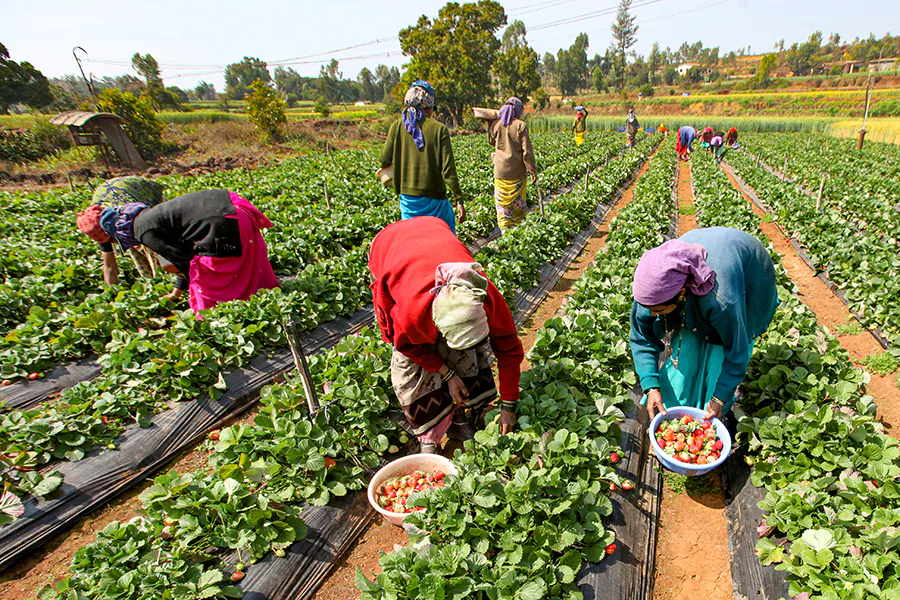The American farming landscape is changing fast. Gone are the days when farming was only passed down from generation to generation. Today, a growing number of new-age farmers—young entrepreneurs, tech-savvy graduates, and even career changers—are stepping into agriculture with fresh ideas and innovative tools. But starting a farm isn’t easy. From land costs to equipment and climate risks, challenges are everywhere.
That’s where US government subsidies come in. The federal government offers a range of support programs to make farming more affordable and sustainable for new entrants. These subsidies are not just financial lifelines—they are investments in the future of American agriculture.
In this article, we explore the top government subsidy programs helping new-age farmers succeed in the USA today.
Why Government Subsidies Matter for New Farmers

New farmers often face higher hurdles than experienced ones. Many don’t own land, lack credit history, and are unaware of resources available to them. Farming equipment is expensive, and access to markets can be tough.
That’s why the US Department of Agriculture (USDA) and other government bodies have created custom support programs to help these new farmers survive and thrive.
These subsidies are designed to:
- Make land and equipment more affordable
- Encourage sustainable and organic farming
- Help young and minority farmers break into the industry
- Offer disaster relief and risk protection
- Provide training and technical assistance
Top US Government Subsidy Programs for New-Age Farmers

1. USDA Farm Service Agency (FSA) – Beginning Farmer and Rancher Program
This is one of the most important programs for new farmers. If you have been farming for less than 10 years, you may qualify for:
- Low-interest loans to buy land, equipment, or livestock
- Down payment assistance (the government pays part of your loan down payment)
- Credit building programs to help those with little or no credit history
- Help accessing microloans for small or startup farms
Why it matters: This program opens doors for farmers who may not qualify for traditional loans.
2. Environmental Quality Incentives Program (EQIP)
EQIP offers financial and technical support to farmers who want to improve environmental practices. That includes:
- Installing solar panels or drip irrigation
- Managing soil health and reducing erosion
- Using cover crops or natural fertilizers
New-age farmers focused on sustainability, organic methods, or climate-smart agriculture can benefit hugely from this program.
3. Conservation Stewardship Program (CSP)
CSP rewards farmers who already use eco-friendly practices. If you’re a new farmer using advanced or creative conservation techniques, you may qualify for annual payments for five years.
This is ideal for:
- Organic farms
- No-till farming setups
- Wildlife-friendly or regenerative farming
Why it matters: It rewards farmers not just for what they grow, but how they grow it.
4. USDA Value-Added Producer Grants (VAPG)
These grants support farmers who want to take their products to the next level—for example, turning tomatoes into sauce or milk into cheese. The government gives up to $250,000 in grants to help with:
- Processing equipment
- Marketing and branding
- Business development
Why it matters: This helps new-age farmers become farm-to-table entrepreneurs instead of just raw producers.
5. Crop Insurance Subsidies
Weather disasters, pests, and market crashes can wipe out a farm. The federal government offers subsidies for crop insurance to protect farmers against these risks. New farmers may get:
- Premium discounts
- Coverage for specialty crops
- Access to whole-farm revenue protection
Why it matters: It gives peace of mind and reduces the risk of total loss in the early years.
6. Sustainable Agriculture Research and Education (SARE) Grants
SARE funds farmer-led research and experiments. If you have an innovative idea—like testing new crops, using AI in irrigation, or exploring vertical farming—you could get funding to try it out.
Why it matters: This encourages innovation in agriculture, perfect for tech-driven young farmers.
Support for Minority and Underserved Farmers
The USDA also runs specific programs for:
- Black, Hispanic, Native American, and Asian farmers
- Veterans
- Women in agriculture
These groups often face additional barriers, and the government offers:
- Training workshops
- Easier access to credit
- Legal and business support
How to Apply for These Subsidies
- Visit the USDA Service Center in your area
- Prepare a basic business or farm plan
- Meet with a local FSA officer to explore eligibility
- Apply online or in person through USDA platforms
Most programs are free to apply for and don’t require a large farm to get started.

Conclusion: Government Help for a New Generation of Farmers
Farming in America is not just for families with generations of land behind them. Today’s young, diverse, and tech-driven farmers have a real shot—thanks to targeted government subsidies and support systems.
Whether it’s a solar-powered microgreen farm in California, a veteran-led organic dairy in Vermont, or a climate-smart startup in Texas, the future of American farming looks bright—and more inclusive than ever.
So if you’re dreaming of starting a farm, don’t let money be the barrier. The US government is investing in you—your vision, your passion, and your land.
Read more :- Top 10 Best American Superfoods That Boost Immunity Naturally






